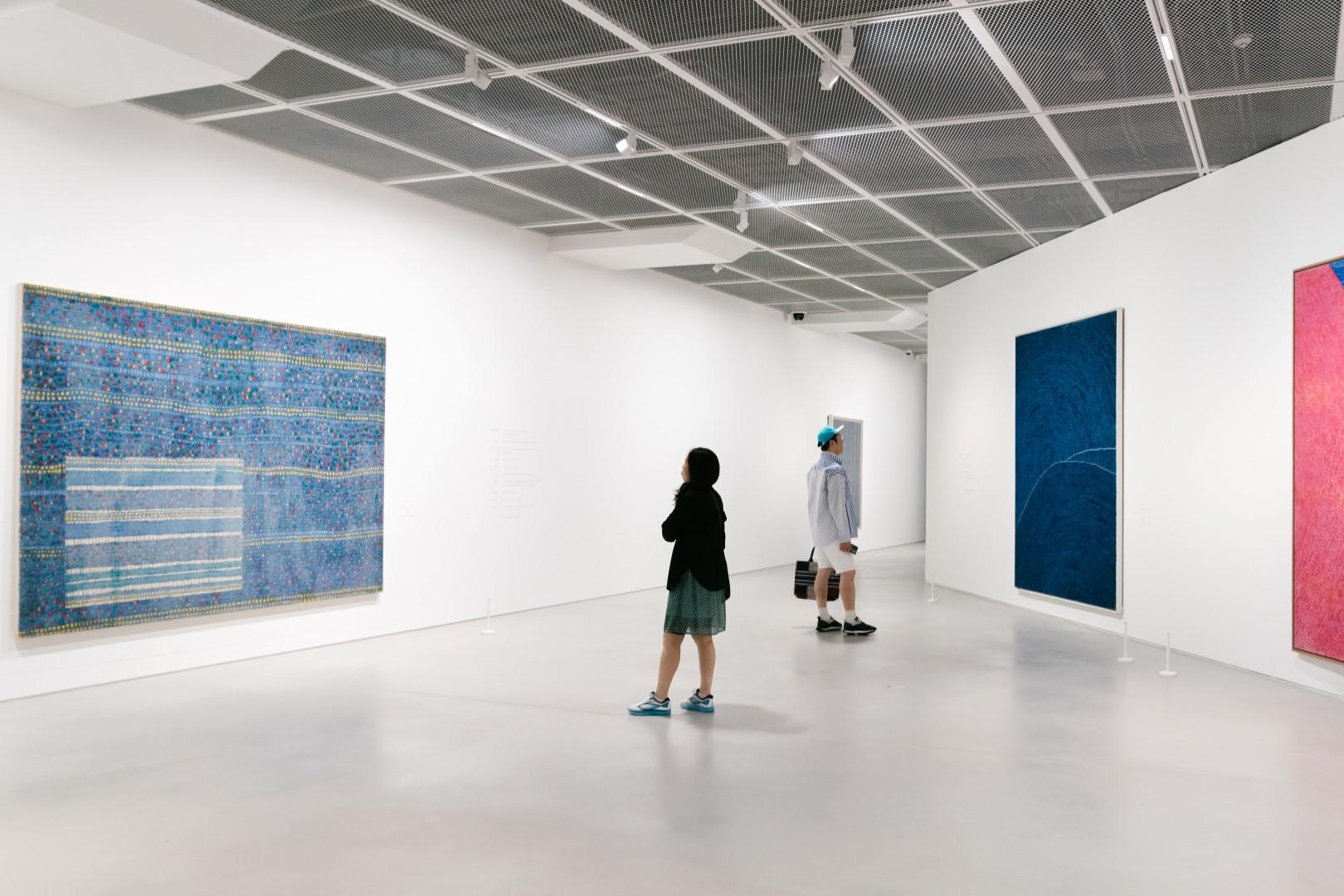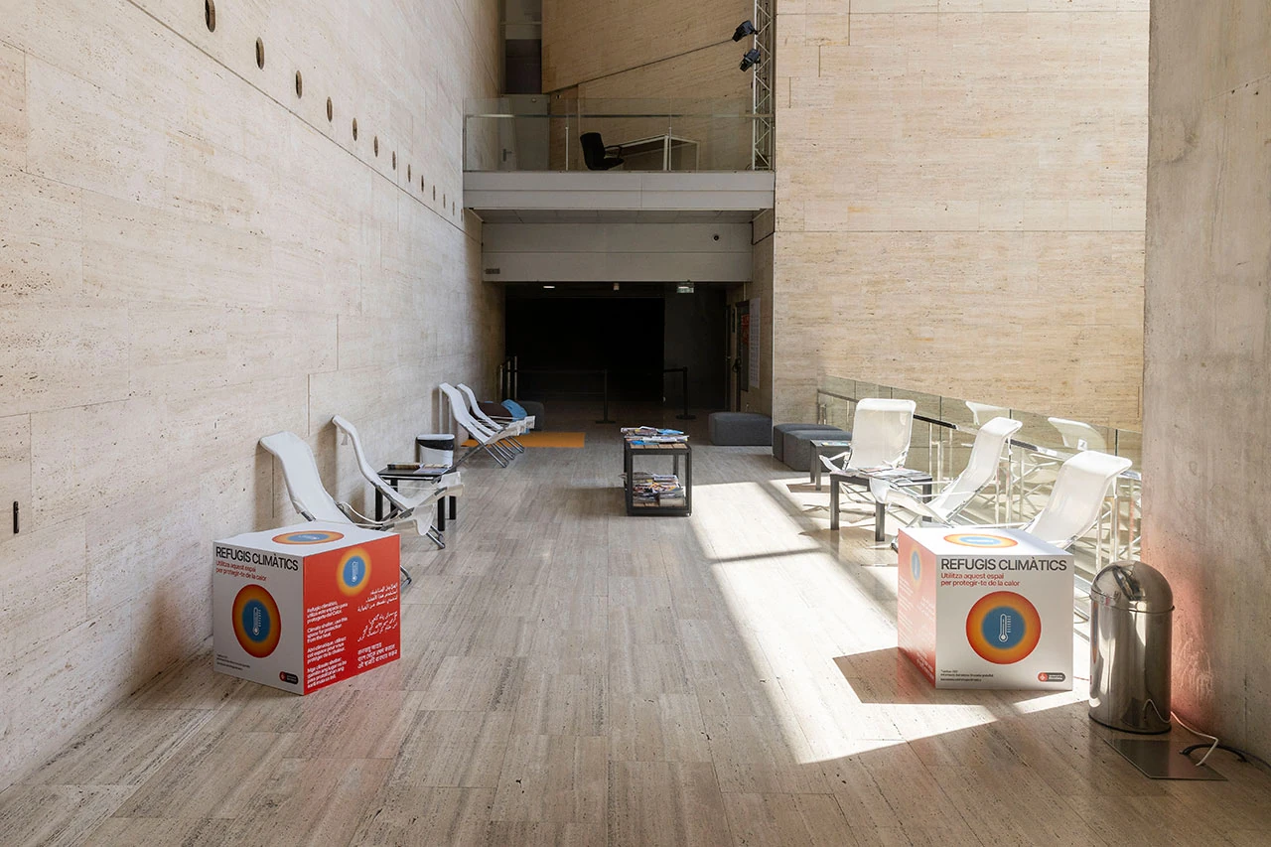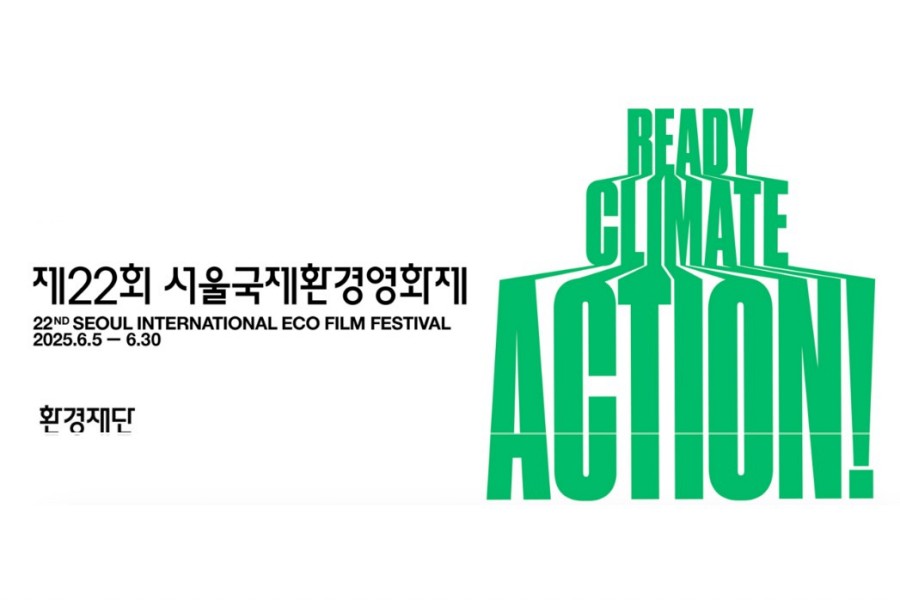1. Art and Carbon Neutrality: Why Museums Must Respond to the Climate Crisis
At first glance, art and carbon neutrality may seem unrelated, but there is growing recognition that art and cultural institutions can play a vital role amid the climate crisis. Traditionally, museums have been seen as spaces for exhibiting and preserving artworks. However, as the relationship between art and the environment becomes increasingly important, it is now a timely demand for museums to move beyond merely providing artistic experiences and become active participants in addressing environmental issues. For museums to fulfill this role, it is crucial to first acknowledge the challenges they face and seek solutions for sustainable museum management.
Challenges Faced by Museums
Museums both domestically and internationally face challenges such as carbon emissions and waste generated during the handling, transportation, and exhibition of artworks, as well as a lack of comprehensive climate response strategies to manage these issues.
In the process of managing artworks, museums consume excessive energy due to the operation of specialized lighting and heating, ventilation, and air conditioning (HVAC) systems necessary for maintaining temperature and humidity, which in turn causes carbon emissions. Energy consumption further increases during nighttime openings or special exhibitions. Significant amounts of carbon are also emitted during the transportation of artworks by land, sea, and air for domestic and international exhibitions. Additionally, the use of cars increases when visitors travel to museums located on the outskirts of cities, contributing further to carbon emissions. Structures, banners, posters, and other materials created for exhibitions become waste, placing additional strain on the environment. The use of non-eco-friendly materials in their production can exacerbate environmental harm. Museums’ reluctance to establish clear goals or policies for environmental protection and climate action, along with the lack of educational programs on climate change for visitors and staff, are also problematic. Furthermore, many museums still rely heavily on traditional power systems for their energy needs.
2. Leeum Museum of Art: A Pioneer of Sustainable Museums
In this context, the Leeum Museum of Art distinguishes itself by contributing to carbon neutrality and environmental protection. Opened in 2004 by the Samsung Foundation of Culture, the museum was designed by architects Mario Botta and Jean Nouvel, creating a space that is both artistic and functional. The Leeum Museum, which exhibits a balanced collection of Korean traditional art and global contemporary works, has been implementing environmentally conscious and sustainable operational practices since 2021. By improving energy efficiency and hosting eco-friendly exhibitions, it plays a leading role as a carbon-neutral institution in the cultural and arts sector.
Operational Direction and Shortcomings Before 2020
Before 2020, the Leeum Museum of Art primarily focused on exhibition planning, collection preservation, and improving visitor experience. However, during this period, activities related to environmental concerns were mostly project-based rather than part of a systematic, long-term strategy. Around 2020, the museum closed temporarily due to the COVID-19 pandemic, which made it difficult to carry out climate-related activities or projects. With exhibitions and programs on hold, there were no opportunities to introduce or implement substantial environmental changes.
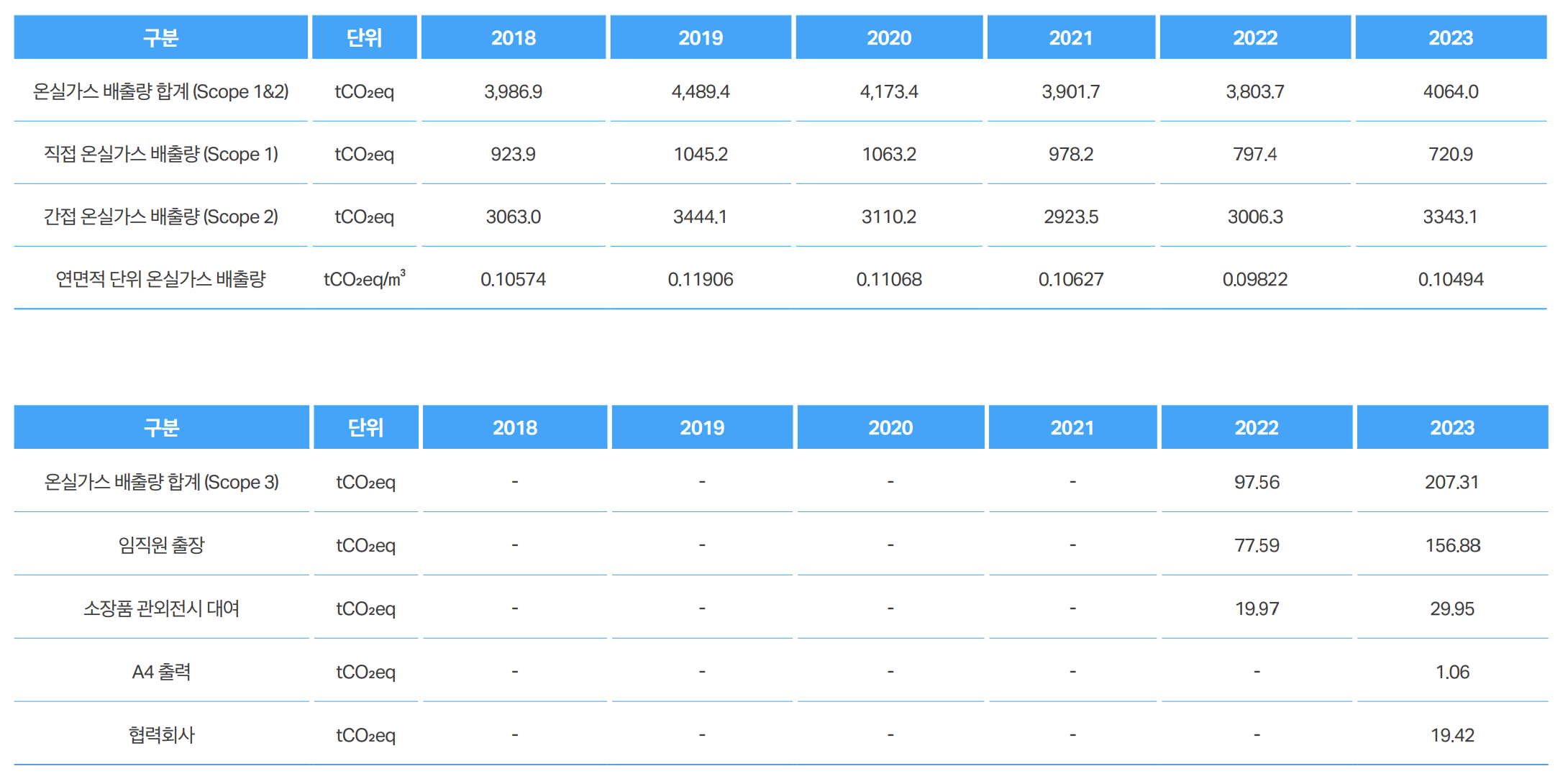
(Source: 2024 Samsung Foundation of Culture Sustainable Management Report)
Since 2020: Transition to ESG Management
Since 2020, the Leeum Museum of Art has declared a management innovation based on ESG principles and has introduced the following initiatives. To improve energy efficiency, the museum installed eco-friendly LED lighting in major exhibition halls and collection preservation areas, and replaced its heating and cooling systems with high-efficiency equipment, reducing exhibition electricity consumption by approximately 15% in 2023 compared to 2021. In managing carbon emissions and adopting eco-friendly materials, Leeum minimized printed waste by introducing AR technology, allowing visitors to access artwork information via smartphones. The museum also uses environmentally friendly printing materials such as vegetable-based inks and recycled paper for promotional materials. The 2022 special exhibition <Cloud Walker> utilized recycled and eco-friendly materials such as plastic bottles and paper. Plastic bottles were combined with bamboo to serve as the main structural material in Don Tanha’s artwork Bamboo House on Water. Paper was used in Kazuya Katagiri’s <Paper Dunes>, creating an installation harmonized with the exhibition lighting. Additionally, the innovative material theBreath®, which absorbs airborne pollutants, was employed in Kengo Kuma’s large-scale installation <SU:M>.
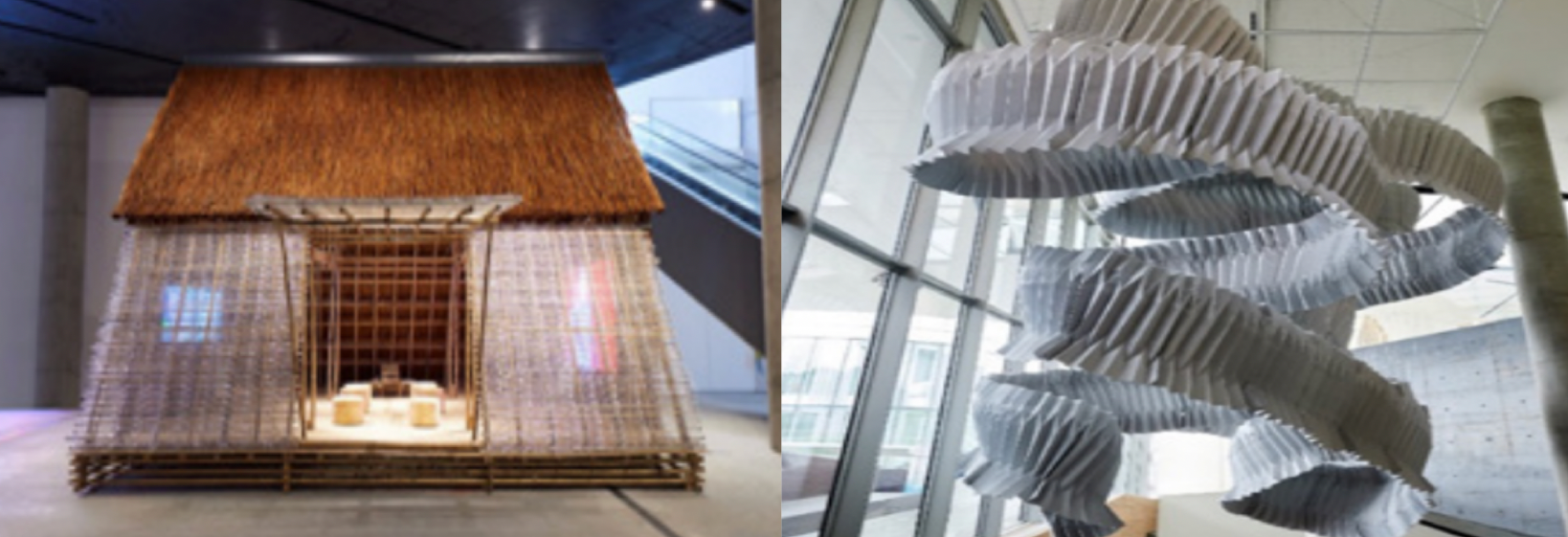
(Source: 2023 Samsung Foundation of Culture Sustainable Management Report)1)
In 2021, the Leeum Museum of Art declared carbon neutrality and formalized sustainable organizational policies, actively practicing ESG management through team collaboration. The exhibition planning team focuses on using eco-friendly materials and developing sustainable exhibition programs to communicate environmental messages to visitors. The operations team has rebuilt the building management system to save energy and introduced waste management programs. The education team is expanding environmental and sustainability-themed educational programs for children and youth. Since 2022, Leeum’s exhibition planning and operational approaches have been included in the Samsung Foundation of Culture’s ESG reports.

(Source: 2024 Samsung Foundation of Culture Sustainable Management Report)
In 2024, the Samsung Foundation of Culture identified seven environmental, ten social, and three governance issues as priority areas for each department. These issues were finalized through internal review based on 2022 performance data, the 2023 Sustainable Management Report, recurring tasks from the Foundation’s ESG Committee, socially relevant issues, and cultural and arts institution initiatives. The Samsung Foundation of Culture practices eco-friendly operations throughout museum management to ensure sustainability, achieving tangible results particularly in energy efficiency and carbon emission reduction.
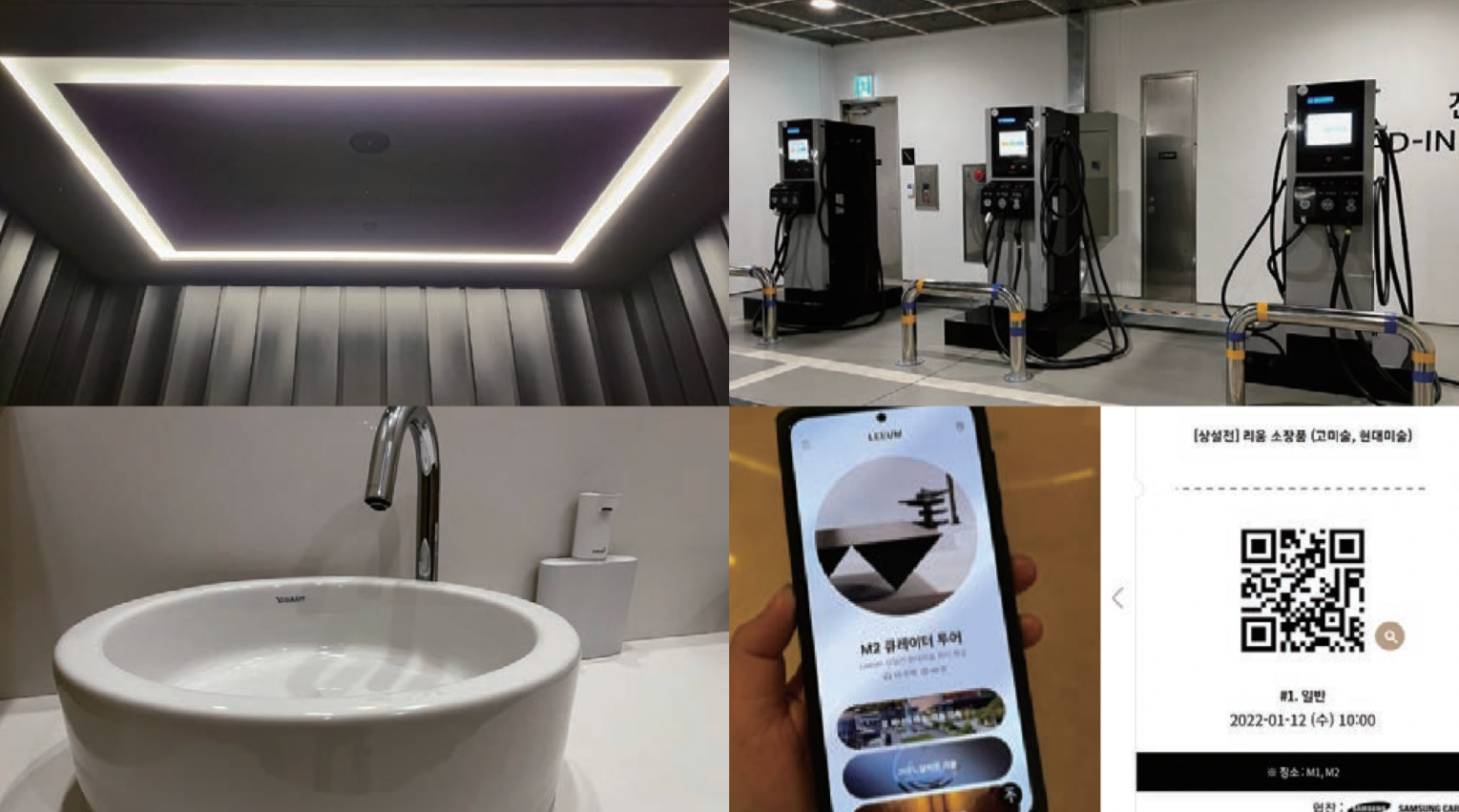
(Source: 2022 Samsung Foundation of Culture Sustainable Management Report)
Since 2022, the Samsung Foundation of Culture has been reducing power consumption and carbon emissions by replacing the lighting in the Leeum Museum’s traditional art exhibition halls with energy-efficient LED lights. Additionally, to support visitors’ use of eco-friendly vehicles, electric vehicle chargers have been installed in the parking lot, and water consumption has been reduced by replacing restroom faucets with sensor-activated taps to minimize energy waste. The introduction of mobile tickets and QR code–based information delivery for visitors also helps minimize paper waste and accelerate digital transformation. The Leeum Store minimizes environmental impact during product manufacturing by using biodegradable materials and recycling discarded materials for exhibition-related merchandise.
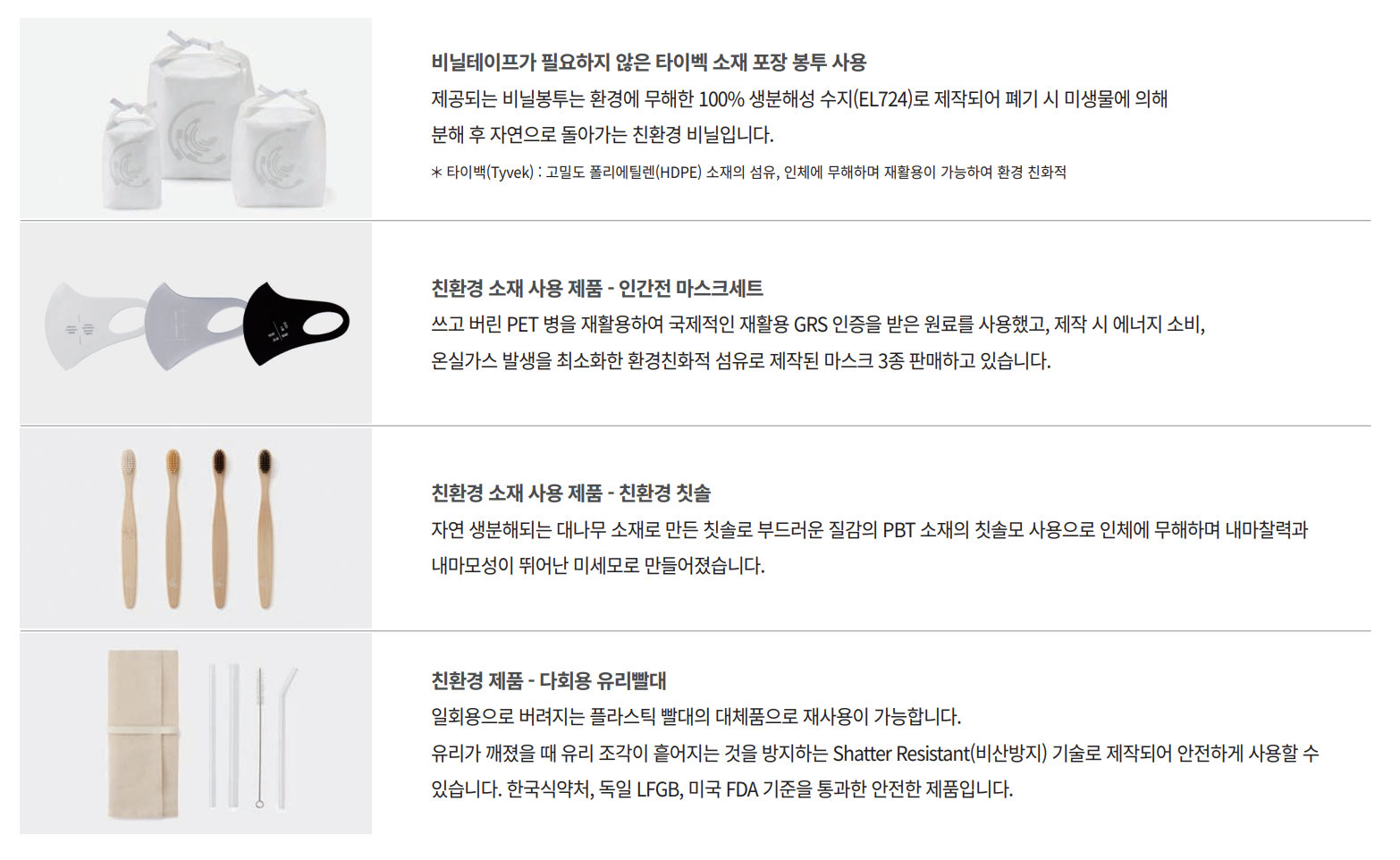
(Source: 2022 Samsung Foundation of Culture Sustainable Management Report)
3. Climate Action in Exhibitions: Waste Reduction Through Modular Partitions

(Source: 2023 Samsung Foundation of Culture Sustainable Management Report)
Since the traditional art gallery at the Leeum Museum primarily uses showcases for exhibitions, partitions are not essential there. However, the contemporary art gallery requires partitions for artwork installations in each exhibition, which has consistently resulted in exhibition waste. To address this issue, the museum explored the introduction of modular partitions and began implementing them fully starting with the June 2022 exhibition.
<At the Art Spectrum> 2022 exhibition, 9.2 tons of waste were generated, and at <Ian Cheng: Building Worlds>, 7.1 tons of waste were produced—reductions of 14.92 tons and 11.5 tons respectively compared to the previous methods. The Leeum Museum minimized materials during the exhibition planning stage, prioritizing the use of recyclable materials to reduce waste. This approach also cut down the time and costs involved in construction and dismantling. Thanks to the modular partitions, the Joseon White Porcelain: <Gunjajihyang> exhibition and Kim Bum’s <How to Become a Rock> generated 8.4 tons and 15.4 tons of waste respectively, whereas under the traditional method, the amounts were estimated at 22.2 tons and 40.3 tons. Traditionally, exhibition planning involves various materials and structures tailored to the curator’s concept, but these two exhibitions minimized materials from the start by keeping only essential elements to reduce waste. Instead of using disposable partitions or temporary decorations, they prioritized reuse by selecting recyclable or reusable materials.
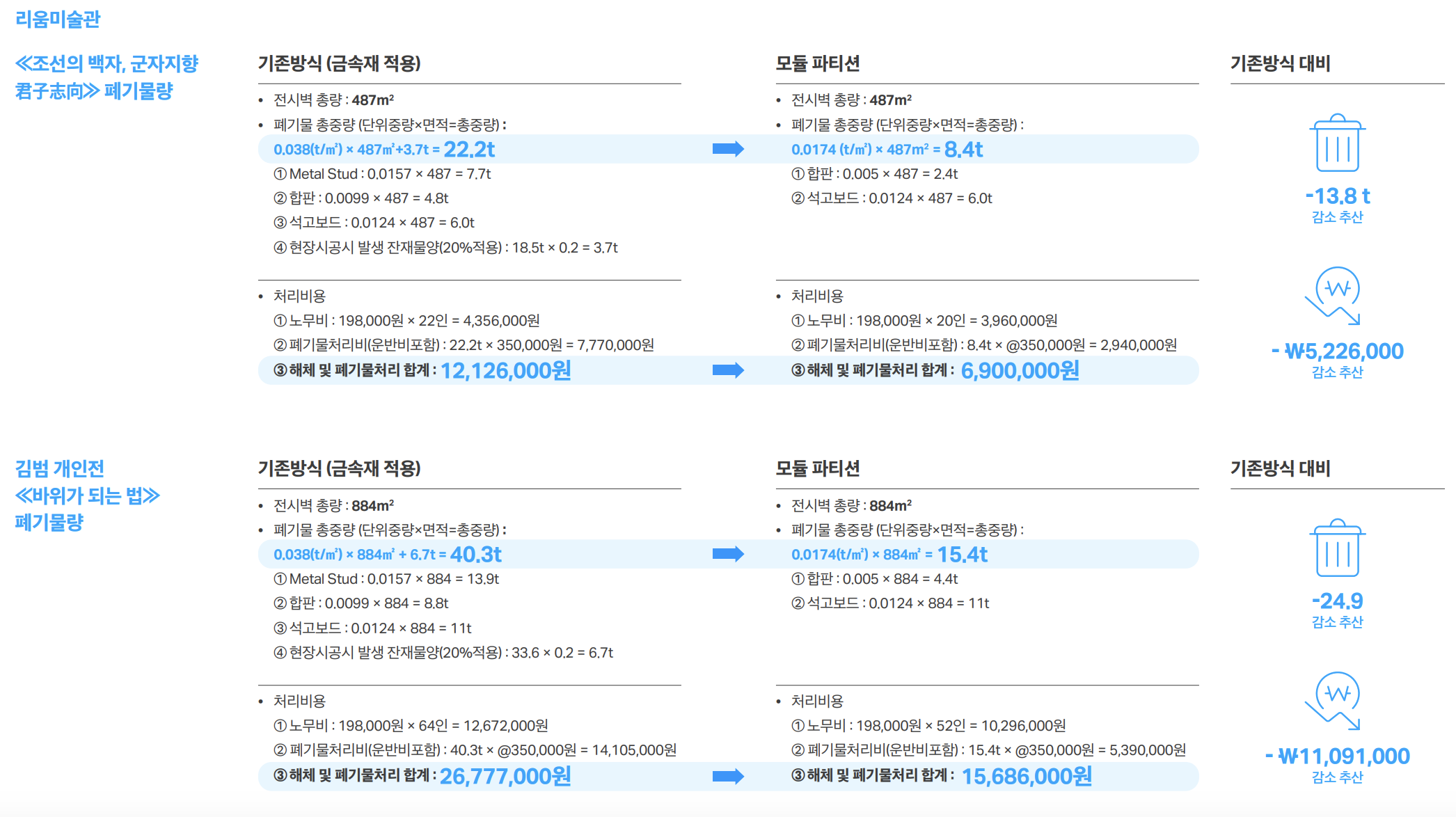
(Source: 2024 Samsung Foundation of Culture Sustainable Management Report)
One of the major issues in managing exhibition waste is the use of ‘temporary partitions’. These partitions are essential for dividing exhibition spaces and creating a unique atmosphere, emphasizing the exhibition concept and enhancing the character of the space. Many curators want to create new and impressive environments to highlight their own exhibition themes, and temporary partitions play a key role in achieving this. They are often used to shape the space according to the exhibition’s theme and purpose, increasing visitor immersion. However, temporary partitions are rarely reusable after a single use, making them almost disposable. The repeated construction and dismantling of new partitions for each exhibition generate significant amounts of bulky waste.
The nature of these temporary partitions poses a significant obstacle to achieving sustainable exhibition practices in the art world. Currently, the art sector is under increasing pressure to adopt eco-friendly operations aimed at carbon neutrality and resource circulation. This makes it essential to find ways to manage these necessary partitions more sustainably. To address this, some museums and exhibition institutions are experimenting with reusable partition systems and environmentally friendly materials, but many challenges remain.
Ultimately, at a time when new approaches are needed to create creative and unique exhibition spaces while minimizing environmental impact, the Leeum Museum of Art has found a solution. The waste reduction efforts seen in the Joseon White Porcelain and Kim Bum solo exhibitions demonstrate that Leeum can continue to evolve toward more sustainable exhibition practices. By embracing sustainability as a core value, the museum is strengthening eco-friendly elements in both exhibition and operational methods and is expected to continuously introduce reusable materials and green technologies. Through these efforts, Leeum Museum has established itself as a role model for other art institutions in achieving carbon neutrality and resource conservation, providing direction for a sustainable future in the arts.
Use of Eco-friendly Materials and Introduction of Reusable Structures
The Leeum Museum of Art designs partitions and exhibition structures using recyclable materials whenever possible, ensuring they can be reused in future exhibitions after the current show ends. This approach reduces waste from single-use exhibition materials and promotes the reuse of structures. Traditionally, partitions and exhibition structures generated significant waste during installation and dismantling. However, the 2024 Art Spectrum exhibition Dream Screen alleviated this issue by using materials that are easy to recycle. The structures used in the exhibition were made from recyclable materials such as aluminum, tempered glass, and acrylic, which can be dismantled and reused in other exhibitions. One of the artworks, Faint Stain, is an installation created with eco-friendly materials, including traditional Korean paper (hanji), ink, and natural dye pigments.
Improvements in Exhibition Waste Management System
The Leeum Museum of Art has implemented a systematic waste management system to improve the efficiency of handling waste generated after exhibitions conclude. All materials are rigorously sorted from the waste generation stage, enabling recyclable materials to be separated and increasing the recycling rate from 40% to 65%. Notably, the 2023 Joseon White Porcelain: <Gunjajihyang> exhibition introduced reusable partitions such as modular walls, reducing waste by over 50%. Additionally, a new digital waste management system was established to systematically record material usage and waste volume for each exhibition. By accumulating and analyzing waste data, the museum can apply more effective waste reduction strategies in future exhibition designs. Leeum Museum aims to raise its recycling rate to 80% and integrates waste reduction considerations from the exhibition planning stage onward.
4. Implications for the Domestic Art Sector
The Leeum Museum of Art’s carbon-neutral initiatives offer several important implications for the domestic art sector. They serve as a strong example that cultural institutions can go beyond merely exhibiting artworks to actively contributing to solving environmental issues.
First, the Leeum Museum of Art presents a sustainability model for the art sector. It practices sustainable operations aimed at carbon neutrality across exhibition planning, building management, and resource use. This demonstrates that art institutions can go beyond merely displaying art to fulfilling environmental responsibilities as well. Leeum serves as a motivating example for other art institutions to set and pursue concrete carbon reduction goals. Second, the museum explores the potential for integrating environmental protection with art. Through innovative exhibition methods such as the use of eco-friendly materials and digital displays, it investigates how artistic activities and environmental conservation can coexist. This forward-looking approach encourages the art world to consider environmentally integrated art practices. Third, Leeum highlights the social responsibility and role of cultural institutions. It positions itself not only as a place for exhibiting and preserving art but also as an organization committed to social and environmental accountability. This underlines the importance of cultural institutions fulfilling their societal responsibilities. Fourth, the museum raises environmental awareness among its visitors. Through diverse environmental education programs and eco-friendly campaigns, it helps audiences naturally recognize the importance of environmental issues and carbon neutrality. This illustrates how the art sector can serve as a crucial medium for fostering public empathy toward environmental challenges. Fifth, Leeum pursues digital transformation and energy efficiency. It has introduced energy-saving technologies in its facility management systems and is expanding exhibitions through digital content to reduce its carbon footprint. Finally, Leeum demonstrates the feasibility of carbon neutrality in the cultural and art sector. Its successful carbon reduction efforts prove that art institutions can achieve carbon neutrality, providing a tangible example for others to set and implement meaningful reduction targets.
In conclusion, the Leeum Museum of Art’s carbon-neutral initiatives highlight that the art sector can contribute to environmental protection beyond its social responsibilities, providing important implications that encourage more cultural and artistic institutions to adopt operations aimed at carbon neutrality and sustainability.
Nevertheless… Remaining Challenges
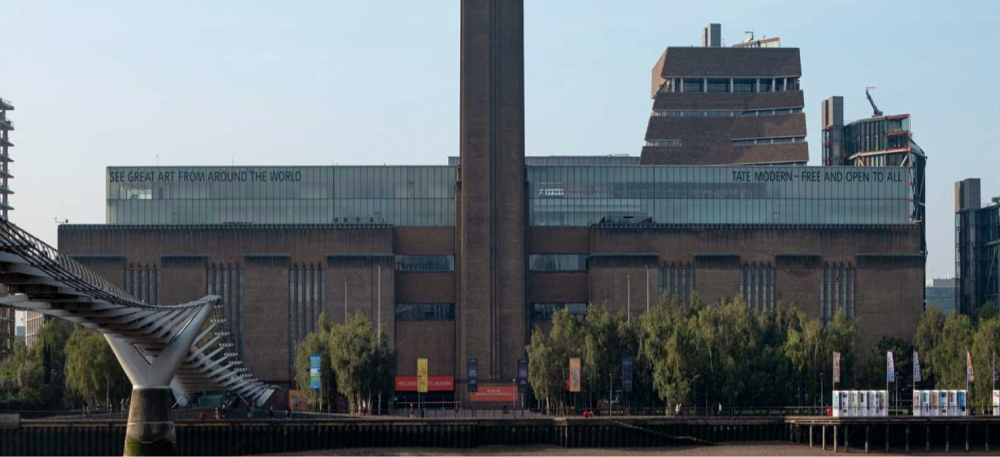
(Source: Tate Modern Museum)
There are many exemplary cases of sustainable museums abroad as well. The Tate Modern in the UK has declared a transition to sustainable energy with the goal of achieving carbon neutrality by 2030, actively incorporating renewable energy into exhibition lighting and heating/cooling systems. The San Francisco Museum of Modern Art (SFMOMA) in the US has maximized energy efficiency and sustainability through its LEED Gold-certified building design. The Louisiana Museum of Modern Art in Denmark supplies more than 50% of its operational energy through renewable sources by installing solar panels and collaborating on local energy programs. The Centre Pompidou in France regularly organizes art exhibitions focused on environmental themes to raise awareness about the seriousness of climate change. In Australia, MONA (Museum of Old and New Art) runs immersive exhibitions centered on environmental issues and sustainability workshops for the local community. The Van Abbemuseum in the Netherlands conducts public art projects related to climate change with local residents, combining art creation and education. Meanwhile, the National Gallery in Berlin, Germany, publishes an annual sustainability report transparently disclosing carbon emissions, energy consumption, and progress toward environmental goals in its operations.
The Leeum Museum of Art holds a leading position among domestic museums and has carried out various climate response activities so far. Nevertheless, there are several areas where further improvement efforts can be made. For example, expanding the use of renewable energy. Currently, the Leeum Museum relies heavily on conventional power systems. Therefore, it should seek ways to increase the use of renewable energy sources such as solar power and improve energy efficiency. This would help make museum operations more environmentally friendly and also reduce energy costs. Additionally, it would be beneficial to strengthen regular exhibitions and educational programs focused on environmental issues. The museum should plan periodic exhibitions centered on climate change and create opportunities to convey the seriousness of climate issues to visitors. Furthermore, expanding sustainable art and environmental education programs targeting children and youth can help foster environmental awareness in future generations. Moreover, Leeum Museum could broaden its climate response efforts through collaboration with the local community. Initiatives such as public art projects involving local residents and artists, as well as climate-related campaigns, could promote community-level climate action. Such cooperation would be an important step for the museum to fulfill its social responsibility. By implementing these suggestions, the Leeum Museum of Art can further strengthen its leading role in climate action and move closer to realizing a vision for a sustainable future.
References
- 2022 삼성문화재단 ESG Report.
- 2024 삼성문화재단 지속가능경영보고서.
- 노컷뉴스 (2022.10.07.) 미술관 탄소량은 어떻게 산정하나요?… 담론의 장 열렸다.
- 노컷뉴스 (2022.10.08.) 미술계 기후대응… 친환경 매뉴얼 만들고 재활용하고.
- 대통령직속 2050 탄소중립녹색성장위원회 (2024.07.18.) 버려짐에서 찾은 특별함, ‘업사이클링’
- 문화경제 (2022.09.05.) [문화 현장] 공간 전체가 전시장이 된 리움미술관…“한계 깨부순다”.
- 브리크 (2022.09.19.) 아시아 예술가들이 내다본 미래, 리움미술관 ‘<구름산책자>’ 개최.
- 아시아경제 (2022.06.27.) 리움미술관 탄소배출 줄인다… “폐기물 발생도 최소화”.
- 아시아경제 (2024.07.19.) 전시 끝나면 폐기물로 변신… 1000억 쓰레기 만드는 韓 미술관들.
- Thomson Reuters Foundation News (2022.06.15.) Net-zero Picasso: Museums rethink art shows to cut climate impact.


